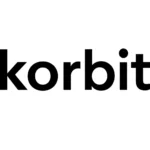Jusung Engineering’s chairman, Chul Joo Hwang, has highlighted a pivotal shift in semiconductor manufacturing: the stacking of transistors. This approach, already prevalent in NAND technology, is now being considered for DRAM and logic chips as traditional scaling reaches its limits.
Hwang pointed out that this transition will necessitate advancements in atomic layer deposition (ALD) technology, which can potentially diminish the reliance on extreme ultraviolet (EUV) lithography—a technology currently dominated by Dutch firm ASML. The move towards stacking transistors is expected to alleviate the need for further miniaturization, making ALD machines crucial for future production processes.
As the semiconductor industry evolves, the demand for ALD technology is set to rise, particularly for the production of III-V and IGZO semiconductors, which also rely on this technology. Additionally, deep ultraviolet (DUV) equipment is anticipated to play a significant role in the manufacturing of 3D DRAM, supporting the transition to stacked transistor architectures.
This shift in manufacturing strategy underscores the industry’s drive to innovate and adapt to the physical limitations of traditional chip scaling, marking a new chapter in semiconductor technology development.




